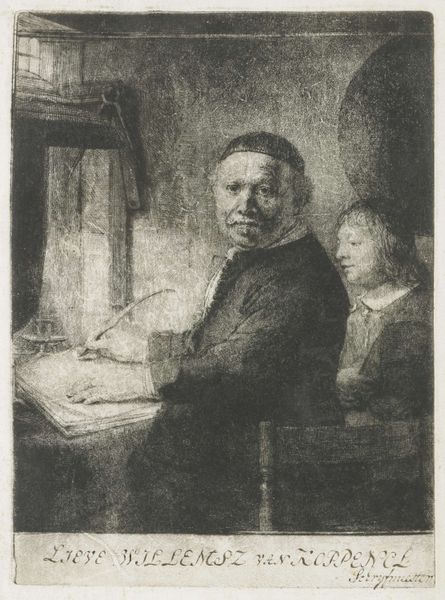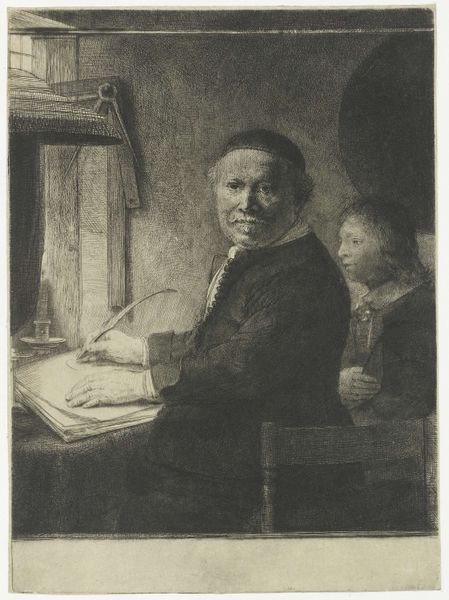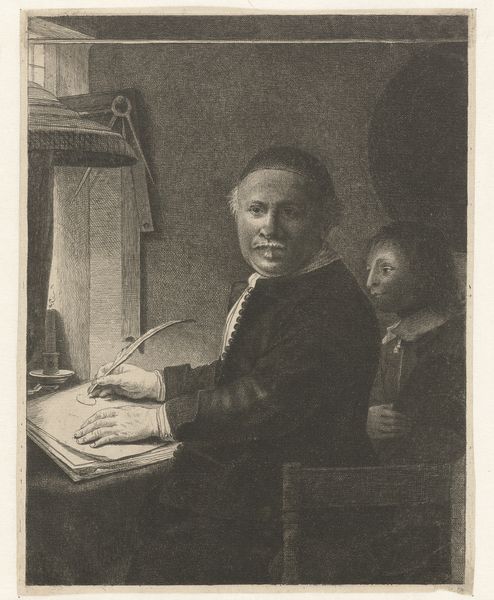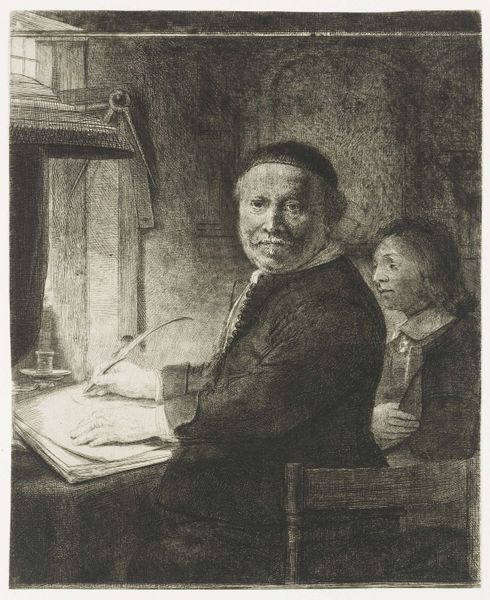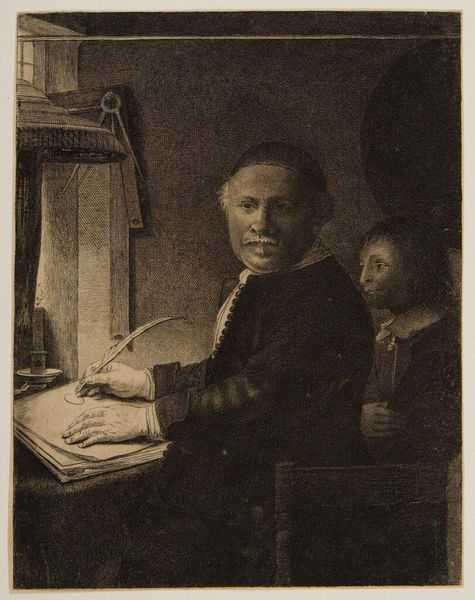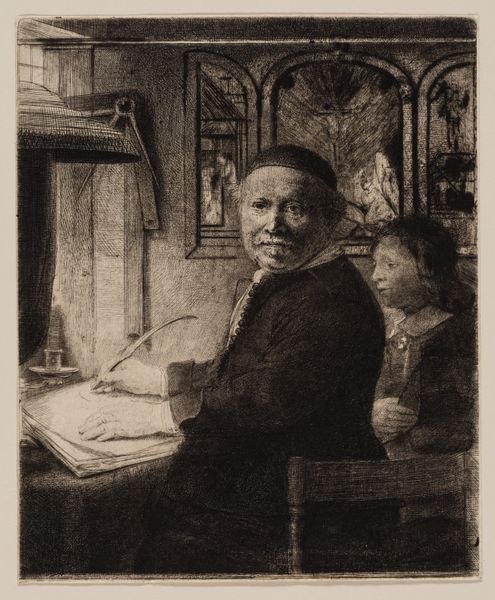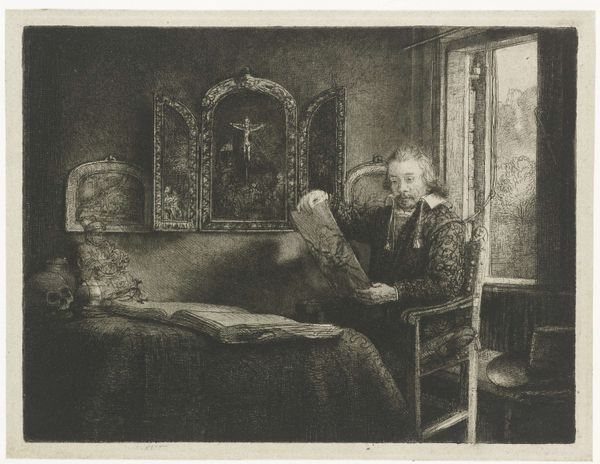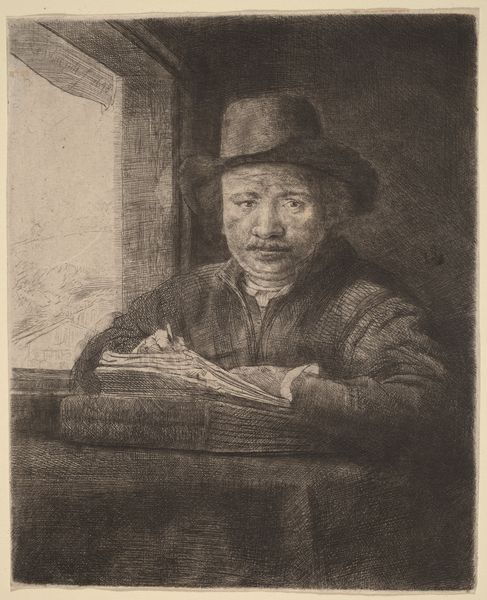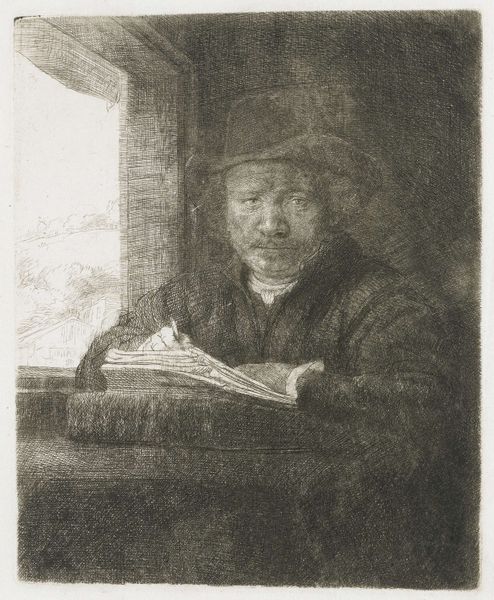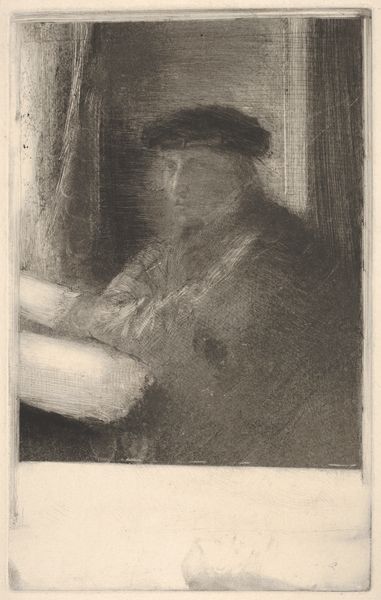
Lieven Willemsz. van Coppenol, writing master: the smaller plate c. 1658
0:00
0:00
rembrandtvanrijn
Rijksmuseum
drawing, print, etching
#
portrait
#
drawing
#
narrative-art
#
baroque
#
dutch-golden-age
# print
#
etching
#
figuration
#
line
Dimensions: height 241 mm, width 185 mm
Copyright: Rijks Museum: Open Domain
Curator: The print before us, dating from about 1658, is Rembrandt van Rijn’s "Lieven Willemsz. van Coppenol, writing master: the smaller plate." There's a quiet drama to it. What captures your eye first? Editor: The hands. The way they clutch the quill and steady the page, tools of labor that tell a silent story of craftsmanship and industry. There's a realness to them, rough maybe, but undeniably powerful. Curator: That roughness speaks volumes. This is a portrayal of a man engaged in intellectual labor, but Rembrandt doesn’t shy away from showing the physical effort involved. Consider the power dynamics at play, too. Van Coppenol was not only a writing master but also a powerful figure, even petitioning the city council against Rembrandt. Editor: Fascinating! It speaks to the cultural status afforded to writing, making legible the connections between literacy, labor, and power during the Dutch Golden Age. This wasn't simply art for art's sake; it was an engagement with social standing. Curator: Precisely. Rembrandt often explored these nuances, challenging social hierarchies and the roles of individuals within them. The boy peering from behind hints at education's role in social mobility. Are these opportunities accessible to all? That questioning, for me, permeates the scene. Editor: Looking closer, the etching lines are quite intriguing. See how Rembrandt uses density and direction of line to describe form and light. You can almost feel the pressure he exerted on the plate, translating idea to object. The materials and means, the very labor of creating this image, it all reflects a tangible artistic output. Curator: Absolutely. And those dense shadows surrounding van Coppenol—they create a psychological space. Rembrandt places him not just in a room but within the context of societal pressures and perhaps personal ambitions, adding layers of interpretive possibilities around identity and aspiration. Editor: I walk away considering the materiality of knowledge itself. From the quill to the ink to the very paper, these are the building blocks of communication, but are embedded within class, labor, and cultural practices. Curator: Indeed. Rembrandt gives us so much more than a portrait here, doesn't he?
Comments
No comments
Be the first to comment and join the conversation on the ultimate creative platform.
